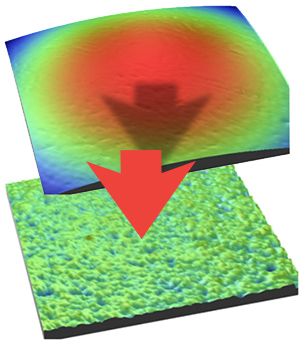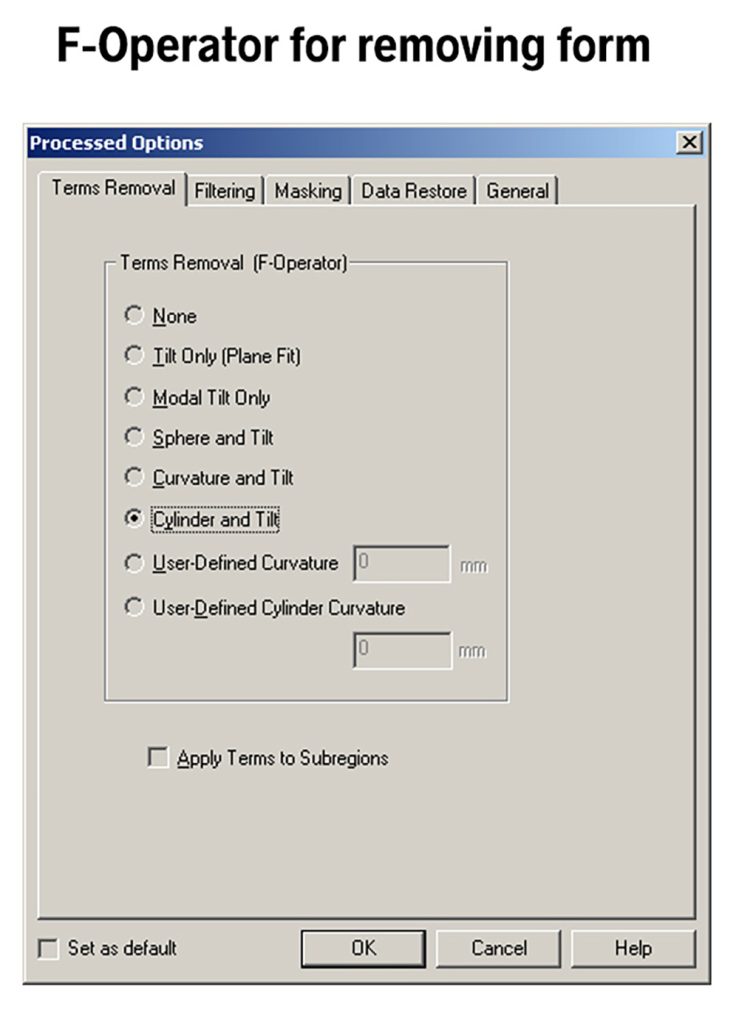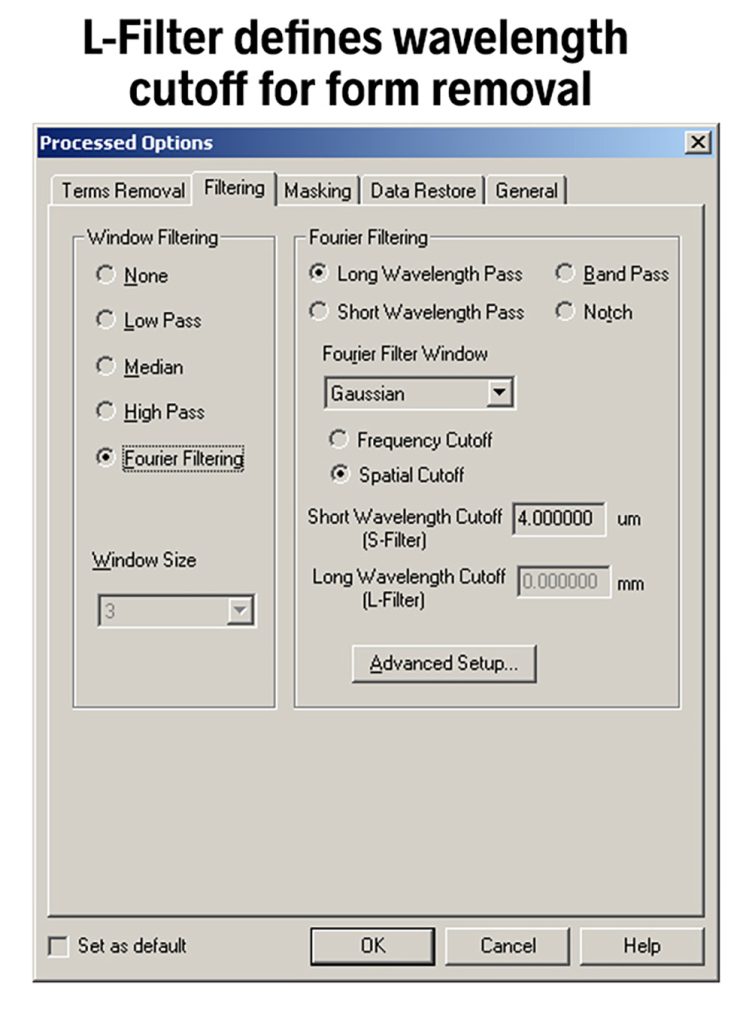You may have heard the term “F-Operator” and wondered what it is, and how it’s used.
As we mention often, surface texture consists of a spectrum of spatial wavelengths, ranging from short wavelength roughness to longer wavelength waviness. Even longer wavelengths are considered form, or shape.
To analyze surface texture, we divide it into the bands of spatial wavelengths that are important for the particular application. By applying a series of filters, we define the wavelength bands that we will call roughness, waviness, and form. The filters are defined by cutoff wavelengths, which are chosen based on the application.
The filtering process typically begins by applying a Short Cutoff (S-Filter, or λs) to eliminate very short spatial wavelengths below the noise floor of the instrument.
At the other end of the spectrum, we typically remove the long spatial wavelengths, or overall shape of the surface, in order to see the underlying texture. We do that by applying the form operator, or F-Operator, which subtracts out the large-scale shape.

This operation may involve fitting the data to a geometric shape, such as a plane to remove tilt, or a sphere or cylinder to remove curvature. The shape may also be defined based on the measurement data itself, such as a least-squares fit. Most software offers a number of preset shapes and fitting options.

The filter is applied at the form cutoff wavelength (lambda-f, or λf), with shorter wavelengths considered waviness and longer wavelengths considered form.

The challenge is that various software refers to the F-Operator by different terms. You may find the filter and filtering options in the Form Removal settings, or under Terms Removal, Geometry Fitting/Removal, etc. You may need to dig into your software’s user manual to find which nomenclature is used; if that research is insufficient, you may need to contact the instrument manufacturer or software developer.
To learn more about the F-Operator and other aspects of analyzing surface data, check out the Filtering module from our Surface Texture and Tribology short course, available on udemy.com.
